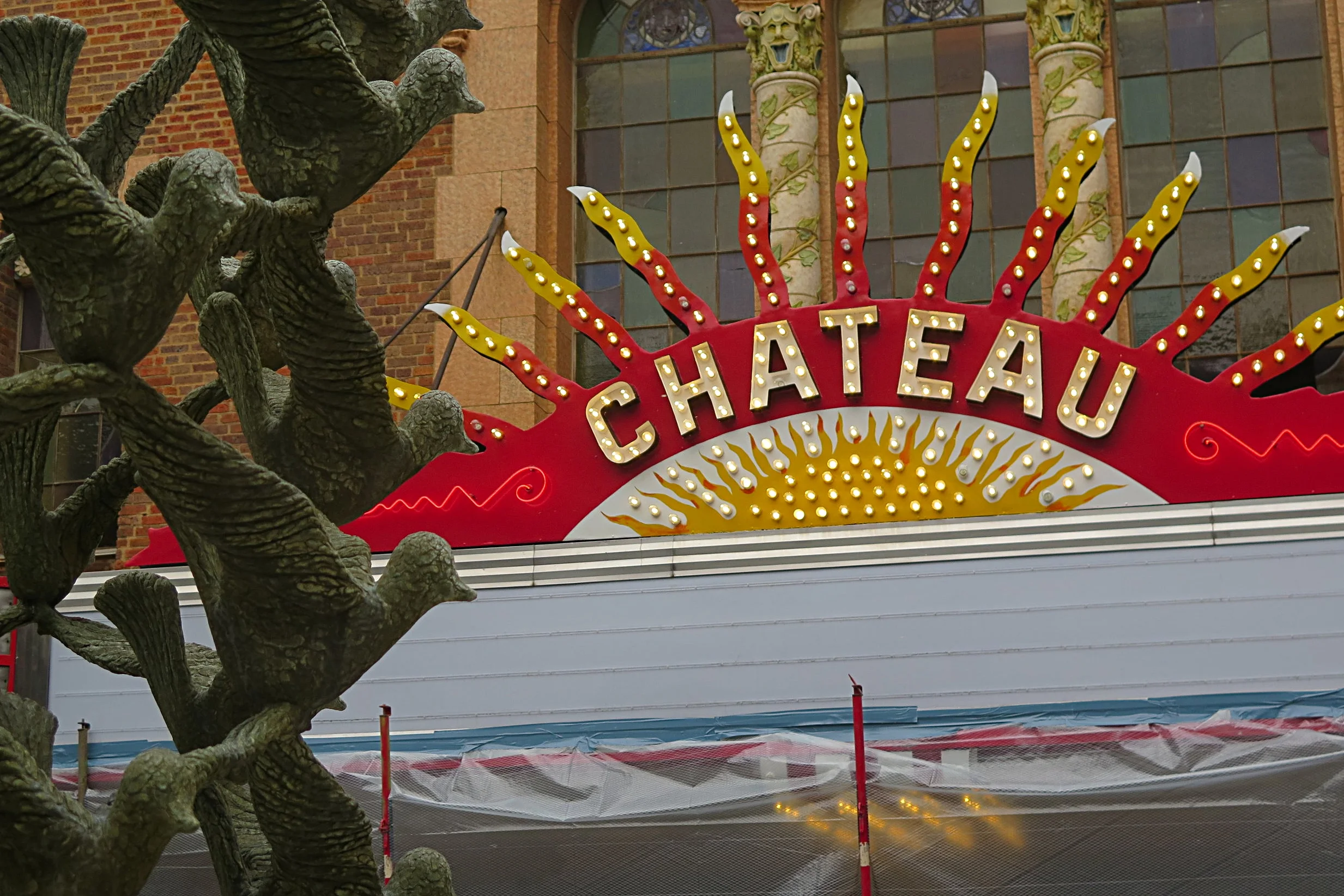Rochester considers $21 million plan to renovate the Chateau Theatre
As the City of Rochester evaluates a $21.3 plan to renovate and expand the historic Chateau Theatre, questions linger over how its operations will be funded and who will manage the building once construction is complete.
Minneapolis-based Miller Dunwiddie Architecture, the consulting firm tasked with developing recommendations for the building's re-use, has offered a plan to expand the theater eastward, install an adaptable seating system and make structural improvements to preserve the building's original character.
The $21.3 million price tag only includes construction costs and does not account for "soft costs," such as planning and design fees. Back in January, the city agreed to pay $6 million — with the help of a $500,000 gift from Mayo Clinic — to buy the Chateau Theatre. The city made the purchase with the understanding that construction costs would be funded by additional tax revenue generated by DMC, according to City Administrator Stevan Kvenvold.
Proposed renovations
Before the consultants were brought on board, the Chateau Re-use Task Force, a 12-member volunteer committee assembled to steer the early phases of the project, landed on the idea of renovating the 89-year-old structure into a multipurpose performing arts center.
With that in mind, the team led by Miller Dunwiddie began analyzing the market feasibility of a new venue and collecting feedback from the community. To complete its study, the group spoke to about 80 people in a series of confidential in-person and telephone interviews, as well as small group meetings.
They determined that many of the historical elements have been preserved by previous tenants. However, because of water damage and other wear and tear, repairs would be necessary to bring the structure up to code. Further, many of the mechanical systems were found to be out of date and in need of upgrades.
In studying the most viable use for the building, the consultants concluded there is a whole in the local market for venues that hold between 400-600 people. They also recognized a need to make sure the space is both flexible and functional.
"In order to best serve the community, we needed to program it as many days of the weeks and hours of the day possible," said Denita Lemmon, principal architect on the planning study. "The amount that the building can be used is quite phenomenal in comparison to other facilities."
Some of the proposed renovations include:
- Restoring the lobby and adding a public coffee/wine bar
- Building a new balcony with 220 seats
- Installing a Gala seat system that can be configured as theater seating for 351 patrons or table seating for 272 people (example in video above)
- Excavating below the theater for Gala seating and furniture storage
A second consulting firm, Webb Management Services, which handled the business end of the plan, estimated the Chateau could eventually hold more than 250 performances and events each year. Many of those would be smaller events that would utilize the theater space or lobby area alone.
"The possibilities are there," said Mayor Ardell Brede, who heads the Chateau task force. "I think it complements what we already have in the community, so I don't view it as competition. And many of us have been to national conferences where many of those cities, if not all of them, brag about their historic theaters that they have and how it's being used."
'Due diligence' needed
Rochester took possession of the Chateau in hopes of revitalizing the building into a vibrant attraction at the center of Peace Plaza. To that end, the consultants presented a plan reflective of the vision shared by city leaders.
"This is a positive thing for this city," said Councilor Mark Bilderback, who also serves on the Chateau task force. "This is something that would draw people into the plaza. ... You're looking at 200 to 300 dates a year of activity."
But Bilderback, like other members of the council, had questions regarding the financial projections provided by Webb. Under their plan, the city would create its own foundation that would be responsible for operations and fundraising.
"It's these ongoing operational costs, year after year, that we really have to be mindful to make sure we have a solid plan," said Councilor Mark Hickey.
Additionally, there is the question of how the Chateau could tie into other projects being developed for the Heart of the City sub-district. The adjacent Michael's site, which has sat empty for the past two years, is one example
"Knowing that we're going to see some reconstruction to the north and east, I think it makes sense to rise up to a bit higher level ... of looking at that area, perhaps, in total," said Council President Randy Staver. "There should be some synergy that we get from the theater and the surrounding areas."
In a memo addressed to the council, DMC's Patrick Seeb said there has been discussion between the owner of the Michael's site and the Heart of the City public realm design team. "Already several good ideas emerged."
Seeb added, "The report is really just the beginning of the due diligence that needs to be done." He outlined several areas that need further exploration, from the operational structure to capital financing.
"Without further due diligence, we could be leaving millions of dollars on the table by assuming the only source of paying for the capital costs is DMC funds," said Seeb, also on the Chateau task force. "Historic tax credits, Minnesota Legacy Funds and philanthropy are at least three sources that should be considered."
Follow Sean on Twitter.
Featured content:
(Cover photo: Med City Beat)












